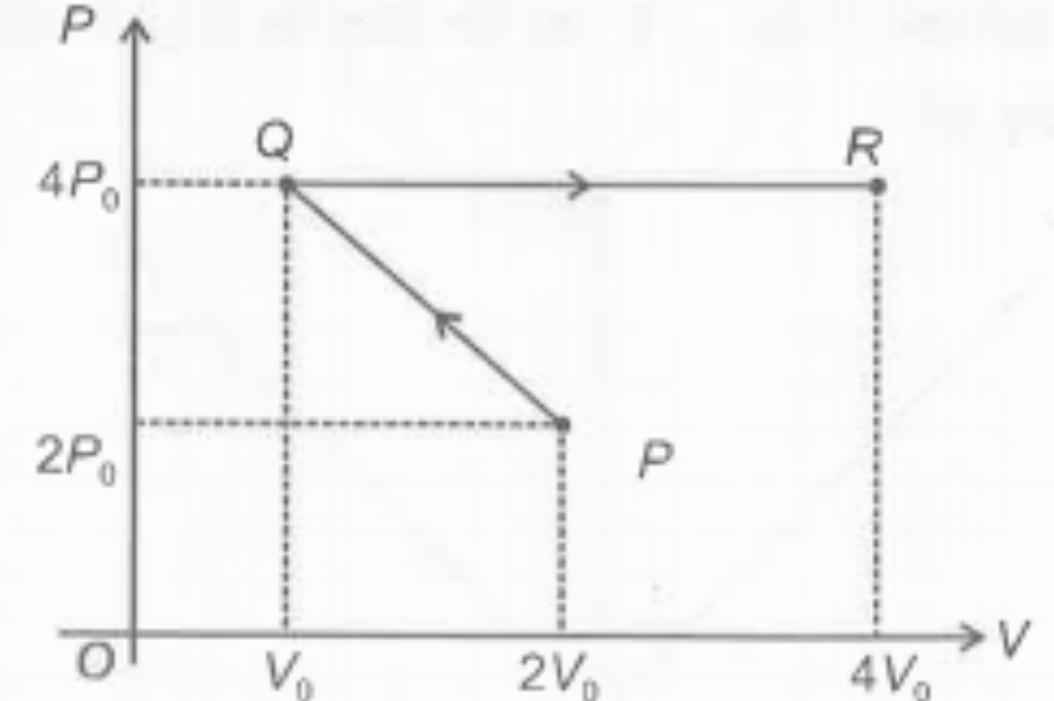In a real gas the internal energy depends on temperature and also on volume. The energy increases when the gas expands isothermally. Looking into the derivation of (Cp−Cv=R1) find whether (Cp−Cv) will be more than R, less than R, or equal to R for a real gas.
To solve the problem, we need to analyze the relationship between the specific heat capacities Cp and Cv for a real gas, particularly in the context of how internal energy depends on both temperature and volume.
1. Understanding the Relationship:
For an ideal gas, the relationship between the specific heat capacities is given by:
Cp−Cv=R
where R is the gas constant. However, for a real gas, the internal energy depends not only on temperature but also on volume.
2. Internal Energy and Isothermal Expansion:
In a real gas, when the gas expands isothermally, its internal energy can increase due to the work done on the gas. This means that the change in internal energy (dU) is not zero during isothermal expansion, which is a significant difference from ideal gases.
3. Applying the First Law of Thermodynamics:
According to the first law of thermodynamics:
dQ=dU+dW
where dQ is the heat added to the system, dU is the change in internal energy, and dW is the work done by the system.
4. Heat Capacities in Real Gases:
For a real gas, the heat added at constant pressure (dQp) can be expressed as:
dQp=dU+dW+dQextra
Here, dQextra accounts for the additional energy changes due to volume changes.
5. Deriving the Modified Relationship:
When we derive the relationship for a real gas, we find:
Cp−Cv=R+KdT
where K is a positive term representing the additional energy contribution due to volume changes.
6. Conclusion:
Since K is positive, we can conclude that:
Cp−Cv>R
Therefore, for a real gas, Cp−Cv will be greater than R.
Final Answer:
Cp−Cv>Rfor a real gas.
---
For an ideal gas, the relationship between the specific heat capacities is given by:
Cp−Cv=R
where R is the gas constant. However, for a real gas, the internal energy depends not only on temperature but also on volume.
In a real gas, when the gas expands isothermally, its internal energy can increase due to the work done on the gas. This means that the change in internal energy (dU) is not zero during isothermal expansion, which is a significant difference from ideal gases.
According to the first law of thermodynamics:
dQ=dU+dW
where dQ is the heat added to the system, dU is the change in internal energy, and dW is the work done by the system.
For a real gas, the heat added at constant pressure (dQp) can be expressed as:
dQp=dU+dW+dQextra
Here, dQextra accounts for the additional energy changes due to volume changes.
When we derive the relationship for a real gas, we find:
Cp−Cv=R+KdT
where K is a positive term representing the additional energy contribution due to volume changes.
Since K is positive, we can conclude that:
Cp−Cv>R
Therefore, for a real gas, Cp−Cv will be greater than R.
Cp−Cv>Rfor a real gas.
Topper's Solved these Questions
Similar Questions
Knowledge Check
Internal energy of an ideal gas depends upon a) Temperature only b) volume only c) both volume and temperature d) neither volume nor temperature
ATemperature onlyBvolume onlyCboth voume and temperatureDneither volume no temperatureFor hydrogen gas Cp−Cv=a and for oxygen gas Cp−Cv=b. So, the relation between a and b is given by
Aa=16 bB16a=bCa=4bDa=b
An ideal gas A and a real gas B have their volumes increases from V→2V under isothermal condtitions. The increase in internal energy
View SolutionAssertion : The internal energy of a real gas is function of both, temperature and volume.
Reason : Internal kinetic energy depends on temperature and internal potential energy depends on volume
View SolutionAn ideal gas undergoes a process P→Q→R as shown in pressure (p) - volume (v) diagram.The work done by the gas is

View SolutionAssertion: Cp can be less than CV.
Reason: CpCV=R is valid only for ideal gases.
View SolutionInternal energy of two moles of an ideal gas at a temperature of 127∘Cis1200R. Then find the molar specific heat of the gas at constant pressure?
View SolutionCP−CV=R. This R is
View Solution
